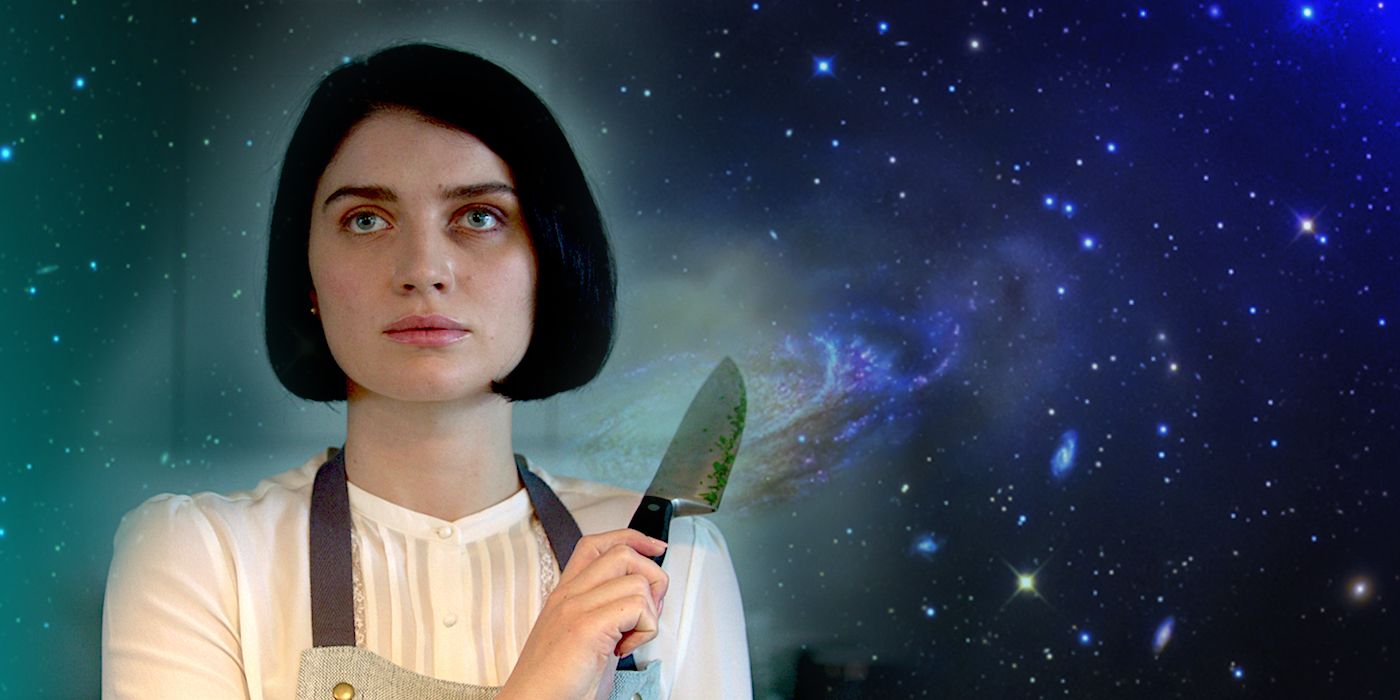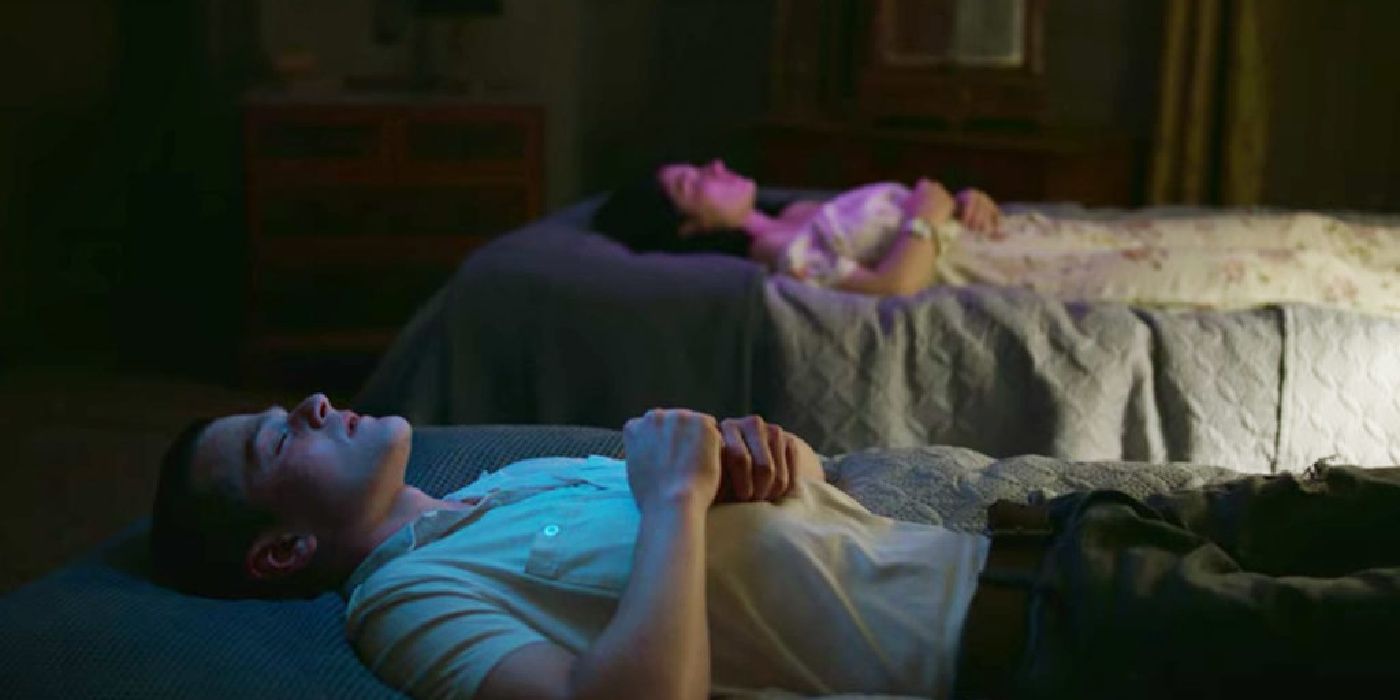In the Netflix Original Series Behind Her Eyes, the theory of astral projection is used to large effect, but is it real? The psychological thriller created by Steve Lightfoot, based on the 2017 novel by Sarah Pinborough, has supernatural elements rooted in esoteric philosophy. Pinborough is an author and screenwriter who has worked in a variety of genres including thrillers, fantasy, and science fiction for television shows such as Torchwood, so this foray into a cross-genre story is part of her wheelhouse. Behind Her Eyes has a lot to say about the theory of astral projection and out-of-body experiences (OBE), but is Pinborough's take more rooted in fantasy or philosophy?
At first glance, the limited Netflix series is a run-of-the-mill thriller. A young woman named Louise (Simona Brown) becomes romantically involved with a man named David (Tom Bateman), who she doesn't realize is her new boss. She also begins a surreptitious friendship with David's wife Adele (Eve Hewson), who seems to be guarding some secrets. She lets Louise into her past, sharing certain aspects such as her stay in an in-patient facility where she befriended an addict named Rob (Robert Aramayo), who guided her toward therapeutic lucid dreaming. Louise suffers from night terrors, so she utilizes Rob's technique to soothe her subconscious mind. The tone of Behind Her Eyes leaps from social mystery to supernatural thriller as lucid dreaming becomes more than just control of one's dreams, but a way to gain power over others in one's life. A massive double twist at the end places astral projection at the forefront, highlighting the 19th-century philosophy with memorable color and dizzying impact.
The theory of astral projection has a storied past, with roots ranging from Ancient Egypt, Biblical beliefs, China, Hinduism, and Inuit practices. The notion is that a person can master lucid dreaming enough to have an intentional (or unintentional, as illustrated in Insidious), out-of-body experience. The theory assumes the existence of a soul or consciousness that belongs to every human, referred to as an "astral body." The astral body is capable of traveling beyond the physical body into other planes, even other universes. The modern understanding (and terminology) was coined by Theosophists in the 1800s who used such practices as a form of meditation and mental health therapy. In recent decades, the practice of lucid dreaming has gained a broader audience — possibly due to the popularity of films like Inception — and current applications include treatment for PTSD and damage to the nervous system. The idea of astral projection, however, is far less sound than lucid dreaming, and there is no scientific evidence that a consciousness separate from neural activity could leave the body and make its own observations.
While lucid dreaming is an accepted practice with both philosophy and science to back it up, astral projection is not so simple a practice, nor are its methods widely accepted or utilized by therapists of Eastern or Western philosophy. Nevertheless, there are many books, podcasts, and stories that explore the idea, and these resources are useful should one want to attempt to put the theory into practice. The methods in Behind Her Eyes shown for lucid dreaming are quite accurate, as many who are able to master the technique use counting, repetition, and other mind and body focusing approaches to build the bulwarks of the relationship between the conscious and subconscious mind.
The thriller explores many aspects of characterization that would compel a person to seek out lucid dreaming and astral projection, such as trauma, bipolar depression, and addictions. The techniques and motivations on display are based on real theories, but astral projection is still considered a pseudoscience. The reality of astral projection is tremulous, but the philosophy behind it is something viewers of shows like Behind Her Eyes and people in general still ponder centuries after its conception.


